- Region Summary News
- 25th Anniversary
- 2011-2013 and Beyond...
- Participate
- testing
- Photos: World Oneness Aspiration Themes
- Torch-Bearer Award
- Videos
- Friends
- UN Initiatives
- Media
- Year - Rapprochement of Cultures
- Schools And Kids
- Song
- About
- Asia Pacific
D. Language had historical impact on 2 countries
Language choice had historical impact on Bangladesh and South Africa. WHR team has visited memorials at both locations.
Bangladesh:

The war of Liberation started in 1971. But the seeds of the movement to gain independence began "through the struggle for the honour of the national language, Bangla in 1952",- from explanation at National Martrys Memorial in Bangladesh:
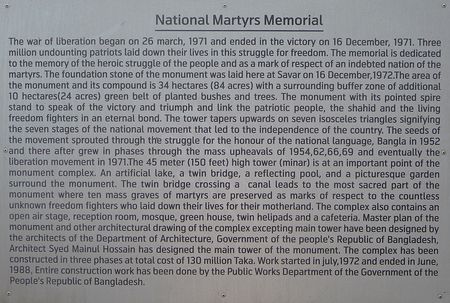
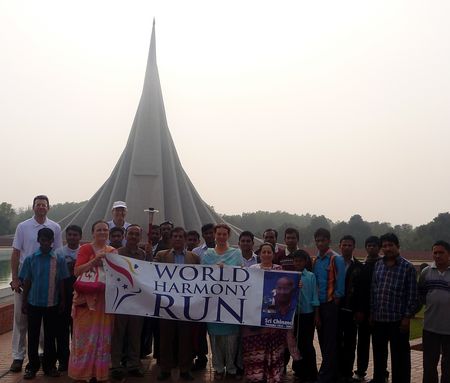
- World Harmony Run team members held the torch with local people visiting the memorial and
- The team sang WHR Theme song -We are the Oneness and Fullness of Tomorrows Sun". http://www.worldharmonyrun.org/song
South Africa- Soweto
-
Mouyisa Makhala Primary
Excerpt from 2008 report. For a full report of the day see: http://www.worldharmonyrun.org/sa/news/2008/1022
One of the great symbolic landmarks of Soweto is the Hector Pieterson Memorial – a memorial to the school child killed on this spot in demonstrations in the 1970s. (see historical note below)
And across the road – Mouyisa Makhala Primary.
We all admire the teachers here –their obvious concern for and dedication to their pupils, and their enthusiastic support of the World Harmony Run.
All the children touch the torch and make a wish for peace and world harmony. Girls recite poems, Desmond from Zimbabwe reads us his poem on friendship.
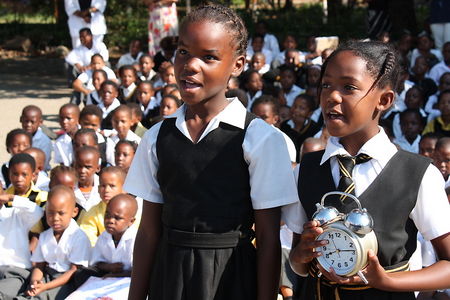
We run out of the school onto the dusty, streets of Soweto buoyed up with hope for a harmonious future growing here with these children and their teachers.
-
Shomang Primary School
The ceremony at this school begins with a long prayer that all five or six hundred pupils recite, eyes closed, standing in the area between the rows of simple brick classrooms. Ondrej from the Czech Republic leads the Harmony Run presentation.
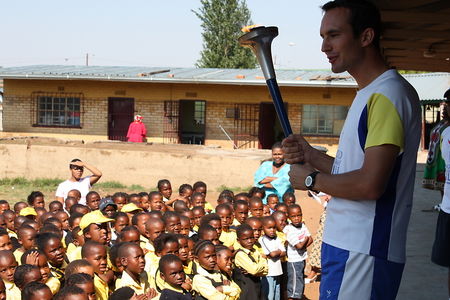
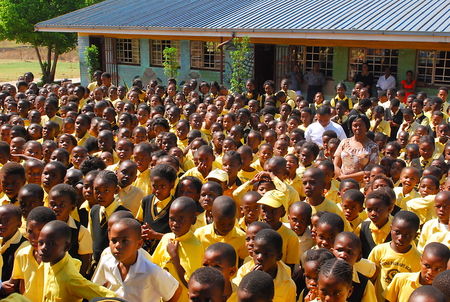 | 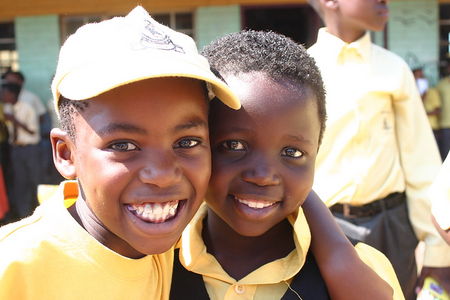 |
|---|
After a photo of the staff with the harmony torch, the head teacher sends the team on its way with – “Keep running, keep running! Close the gap!”
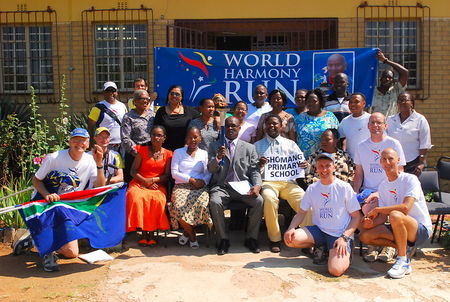
And so we run on out of Soweto.
Note: The Day of the African Child is celebrated on June 16 in recognition of the day when, in 1976, thousands of black school children in Soweto, South Africa, took to the streets to protest the inferior quality of their education and to demand their right to be taught in their own language. Hundreds of young boys and girls were shot; and in the two weeks of protest that followed, more than 100 people were killed and more than 1,000 were injured. (http://www.unicef.org/media/media_40005.html)






















